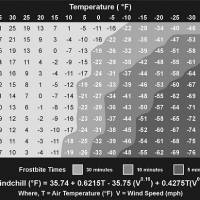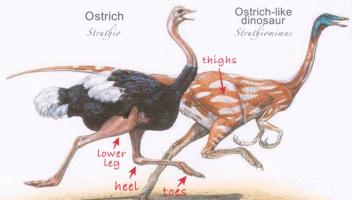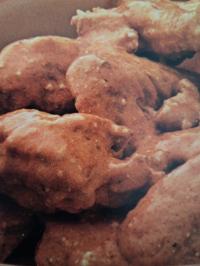Treating for Cold Exposure and Frostbite

The following material may assist you in treating a victim for exposure to the cold and also how to deal with frostbite. This information is derived from "Advanced First Aid & Emergency Care," 2nd edition, by the American Red Cross. To obtain a copy of this book and to take instruction in first aid, please contact the local office of the American Red Cross. They are listed in the white pages of your telephone book.
The extent of injury caused by exposure to abnormally low temperature generally depends on such factors as wind velocity, type and duration of exposure, temperature and humidity.
Freezing is accelerated by wind, humidity or a combination of the two. Injury caused by cold, dry air will be less than that caused by cold, moist air or exposure to cold air while wearing wet clothing. Fatigue, smoking, drinking of alcoholic beverages, emotional stress and the presence of wounds or fractures intensity the harmful effects of cold.
SIGNS AND SYMPTOMS
The general manifestations of prolonged exposure to extreme cold include shivering, numbness, low body temperature, drowsiness and marked muscular weakness. As time passes there is mental confusion and impairment of judgment. The victim staggers, his eyesight fails, he falls and he may become unconscious. Shock is evident and the victim's heart may develop fibrillation. Death, if it occurs, is usually due to heart failure.
Frostbite results when crystals form, either superficially or deeply in the fluids and the underlying soft tissues of the skin. The effects are more severe if the injured area is thawed and then refrozen. Frostbite is the most common injury caused by exposure to the cold elements. Usually, the frozen area is small. the nose, cheeks, ears, fingers and toes are the most commonly affected.
Just before frostbite occurs, the affected skin may be slightly flushed. The skin changes to white or grayish yellow as the frostbite develops. Pain is sometimes felt early but subsides later. Often there is NO pain; the part being frostbitten simply feels intensely cold and numb. The victim commonly is not aware of frostbite until someone tells him or until he observes his pale, glossy skin. The extent of local injury cannot be determined accurately on initial examination, even after rewarming. The extent of tissue damage usually corresponds to that in burns. In superficial frostbite, there will be an area that looks white or grayish and the surface skin will feel hard but the underlying tissue will be soft. With deeper involvement, large blisters appear on the surface, as well as in underlying tissue, and the affected area is hard, cold and insensitive. Destruction of the entire thickness of the skin will necessitate skin grafting and will constitute a medical emergency, because gangrene may result from loss of blood supply to the injured part.
FIRST AID
The objectives of first aid are to protect the frozen area from further injury, to warm the affected part rapidly and to maintain respiration. Formerly, it was recommended that victims of frostbite be treated by slow warming - rubbing with snow and gradually increasing the temperature. But recent studies have shown conclusively that much better results are obtained if the affected part is WARMED RAPIDLY in running or circulating water, unless the part has been thawed and refrozen, in which case it should be warmed at room temperature (from 70 to 74 degrees Fahrenheit). Do NOT use excessive heat, as from a stove, hot water bottles, electric blankets or other devices.
FROSTBITE
1. Cover the frozen part.
2. Provide extra clothing and blankets.
3. Bring the victim indoors as soon as possible.
4. Give him a warm drink (not alcoholic!).
5. Rewarm the frozen part QUICKLY by immersing it in water thatis warm but not hot. Test the water by pouring some over theinner surface of your forearm or place a thermometer in thewater and carefully add warm water to keep the temperaturebetween 102 degrees and 105 degrees Fahrenheit. If warm wateris not available or practical to use, wrap the affected partin a sheet and warm blankets.
6. Handle the area of the frostbite GENTLY and DO NOT MASSAGE IT.Severe swelling will develop rapidly after thawing. Discontinue warming as soon as the part becomes flushed (turningred). Once the part is rewarmed, have the victim exercise it.
7. Cleanse the affected area with water and either soap or a milddetergent (NOT laundry or dishwasher detergent, though; theycan be caustic and cause a chemical burn). Rinse it thoroughly. Carefully blot dry with sterile or clean towels. Do NOTbreak the blisters.
8. If the victim's fingers or toes are involved, place dry,sterile gauze between them to keep them separated.
9. Do NOT apply other dressings unless the victim is to betransported to medical aid.
10. Elevate frostbitten parts and protect them from contact withbedclothes.
11. Do NOT allow the victim to walk after the affected part thaws,if his feet are involved.
12. Do not apply additional heat and do not allow the victim tosit near a radiator, stove or fire. The numbed part may beseverely burned and the victim might never realize it ishappening to him.
13. If a person with frozen feet is alone and MUST walk to getmedical assistance, he should NOT attempt thawing in advance.
14. If travel after receiving first aid is necessary, cover theaffected parts with a sterile or clean cloth.
15. Obtain medical assistance as soon as possible. If the distanceto be covered is great, apply temporary dressings to the handsif they have been affected by frostbite.
16. Keep injured parts elevated during transportation.
17. If medical help or trained ambulance personnel will not reachthe scene for an hour or more AND if the victim is CONSCIOUSand NOT VOMITING, give him a weak solution of salt and bakingsoda at home or while enroute (1 level teaspoon of salt and1/2 level teaspoon of baking soda in each quart of water,neither hot nor cold). Do not give alcoholic beverages. Allowthe victim to sip S-L-O-W-L-Y. Give an adult about 4 ounces (ahalf glass) over a period of 15 minutes; give a child from 1to 12 years old about 2 ounces; give an infant (under 1 yearold) about 1 ounce every 15 minutes. Discontinue giving fluidsif vomiting occurs. Fluid may be given by mouth ONLY ifmedical help will not be available for an hour or more and isnot otherwise contraindicated.
PROLONGED EXPOSURE
1. Give the victim artificial respiration, if necessary.
2. Bring the victim into a warm room as quickly as possible.
3. Remove wet or frozen clothing and anything that constricts thevictim's arms, legs or fingers and might interfere withcirculation as the frozen part is thawed and swelling begins.
4. Rewarm the victim rapidly by wrapping him in a warm blanket orby placing him in a tub of water that is warmed to 102 to 105degrees Fahrenheit. If a thermometer is not available, makesure the water is not hot to YOUR hand and forearm.
5. If the victim is conscious, give him hot liquids (but notalcohol) by mouth.
6. Dry the victim thoroughly if water was used to rewarm him.
7. Carry out the appropriate procedures as described under frost-bite.



























